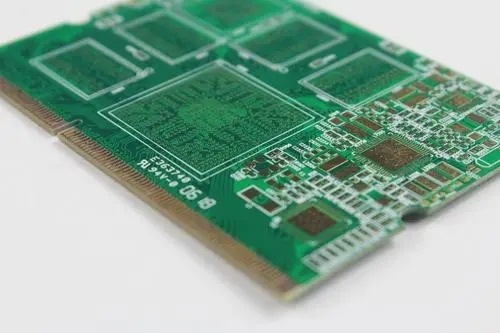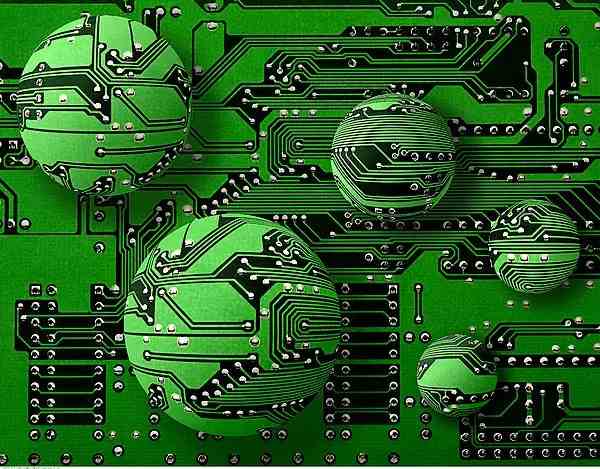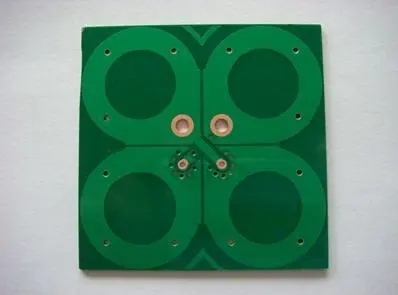
The best PCB design guide for reducing EMI is now shared
Composition of electromagnetic interference
We know from physics that nature has four basic forces. They are strong nuclear force (combining neutrons and protons), weak nuclear force (allowing radioactive decay), gravity (giving weight to objects or pulling towards larger objects) and electromagnetic force (this is magnetic gravity) between charged particles). In many cases, this attraction with electrical and magnetic properties is advantageous. For example, magnetic elements are used to promote stator movement around the rotor in a motor. However, in other cases, this naturally occurring force may cause serious problems for the required circuit operation.
All electronic circuit boards are designed to allow or even enhance electronic flow to achieve certain performance goals. This action - the current passing through a closed path - creates a magnetic field projecting outward and perpendicular to the current flow. When there are nearby electronic components or signal paths in the field, electromagnetic interference (EMI) will occur. For many PCBA designs, especially high-speed circuit boards, controlling the amount of EMI is the primary consideration that must be fully managed. For the circuit board with radiator classification module, the common method is to implement EMI filter design Although filters are effective, as a circuit board designer, understanding other PCB design guidelines for reducing EMI is a tool you may have to use frequently.
EMC and EMI: What's the difference?
Most PCBA is not the only electronic or electrical equipment in the product. Therefore, it is helpful to have a macro or system level understanding of the EMI problem before we go deep into the board EMI problem. Just as electromagnetic energy is emitted from a single component, conductor or trace, it will also radiate from the circuit board itself to the environment; If you have not done so before, please place the Gauss meter near the PCB and you will get a reading. When multiple boards are close together, it is important to achieve electromagnetic compatibility or EMC.
EMC can be considered to achieve acceptable harmony or balance between electromagnetic components, so that the interference is minimum or at least low enough to not significantly interfere with normal operation. Unfortunately, it is not possible to eliminate all EMI; However, getting EMC is. EMI is actually any interference from the electromagnetic source, usually refers to the interference on a single PCBA. This classification is sufficient to investigate the problem, because minimizing EMI on and from the circuit board helps EMC in the circuit board working environment.

Where does PCB EMI come from?
Electromagnetism spans an infinite frequency range and is almost everywhere. Moreover, as shown in the figure below, it is generated by many tools, equipment and products that we use daily.
Electromagnetic spectrum
As long as there is current, there will be the possibility of EMI. For PCBA, the sources of EMI can be divided into one of the following categories:
component
Electronic components and components - especially high power devices such as processors, FPGAs, amplifiers, transmitters, antennas, etc. - can have a significant impact on EMI. In addition, the switch assembly can produce destructive interference.
Signal and track
EMI can also be generated along wiring or at pin and connector points. For example, unbalanced differential pair routing may lead to signal attenuation and reflection along the transmission path, which may seriously affect signal integrity or the ability to accurately identify signals, resulting in incorrect circuit behavior. In addition, unwanted coupling between the signal path and the ground plane may occur due to stray capacitance.
External sources
If the circuit board is too close to the radiation source (possibly another circuit board or component), EMI may be introduced to your PCBA. The vibration or movement of other equipment or devices in the circuit board environment may also produce harmonics.
Obviously, eliminating all potential sources of EMI is a difficult task. Fortunately, PCB design guidelines for reducing EMI can be developed to help minimize noise and achieve EMC.
Best PCB Design Guidelines for Reducing EMI
Understanding the sources of EMI that may affect your circuit board is critical to developing strategies to mitigate this constant threat to PCBA performance. In addition, from the source perspective, EMI, where the minimization method is specific to a specific source, can be a good position to design a set of PCB design guidelines to reduce EMI.
Reduce EMI of components
As mentioned earlier, components may be the main source of EM radiation, which will not only affect on-board operation, but also damage external PCBA and electronic circuits. Therefore, defining actions to mitigate their negative impacts (listed below) is critical for good EMI reduction guidelines.
How to reduce EMI of components
Select low power consumption components as much as possible
One of the largest EMI generators on a circuit board is a component that requires a lot of power. With the drive to reduce power consumption, alternatives that do not sacrifice functionality or quality can often be found.
Isolate different types of components
A good design practice is to always put together components that handle the same type of signal. For example, digital components should be close to other digital components and isolated from analog equipment.
Use PCB fence
Another tool to reduce EMI is to enclose components or sub circuits in a fence; Such as PCB protection ring and Faraday cage. These can also effectively reduce radiation to the environment around the circuit board.
Using heat dissipation technology
For electronic components, energy generates heat. Therefore, efficient radiators and through holes can greatly help reduce EMI.
In addition to reducing the EMI of components, the operation mode of wiring will also greatly affect the EMI of circuit boards.
PCB Layout Design for Minimizing EMI
One of the most important considerations when laying out boards is spacing. This includes ensuring adequate clearances and creepage distances between conductive elements.
Maintaining adequate clearance is critical to minimizing EMI
For multilayer boards, the order and distance between the conductive layer and the ground plane are also important, as shown in.
How to reduce EMI from signals and planes
Leave enough clearance between signal lines
The most important factor to reduce EMI between runs is spacing or clearance. Follow the recommendations of your CM, which should be based on IPC standards.
Ensure decoupling and bypass capacitors are grounded
Stray capacitance is hard to avoid; However, its impact can be mitigated by grounding the capacitor as close to the pin as possible.
Use good EMI filtering
Most designs, especially where digital signals are used, include switching devices that cause signal distortion. In these cases, the best way to improve the signal fidelity is filtering.
Minimize the length of the return path
The grounding loop shall be as short as possible.
Ensure the differential wiring is the same
For differential signal paths, the routing pairs must mirror each other. This includes run length, copper weight, and constant spacing. If necessary, twists and turns should be used to maintain length and spacing.
Avoid sharp corners
When routing, use rounded edges instead of sharp corners, which may cause reflections due to modified characteristic impedance.
Do not place conductive layers adjacent to each other
You should never place two conductive layers side by side in a PCB stack. They are best separated by the ground plane.
Carefully separate the ground plane
It is preferable to use separate grounding for different signal types. However, if you do use a split ground plane, be sure to use a single point to combine the ground.
Your PCB layout, including its layers, is important to promote good signal integrity and reduce EMI. However, if external EMI is not addressed, any set of PCB design guidelines for reducing EMI will be incomplete.
Avoid external EMI
Minimizing external EMI is very important for signal integrity and circuit operation on the circuit board and EMC of the PCBA installation environment. Possible actions include the following.
How to reduce EMI from external sources
Use shielding
Typically, shielding is applied to specific components or sub circuits. They differ from fences in that they are usually made of insulating material and placed on top of parts or completely enclose them.
Use housing
Enclosures are generally considered safety devices. However, the enclosure can also effectively protect the circuit board from debris and EMI from external sources.
All PCB design guidelines discussed above for components, layouts, and external sources can effectively minimize EMI on the circuit board, and contribute to the EMC of the circuit board operating environment. However, whether these are necessary depends on your design, its functionality, and performance goals. Therefore, you should strive to optimize your design to reduce EMI, preferably using analysis tools.







